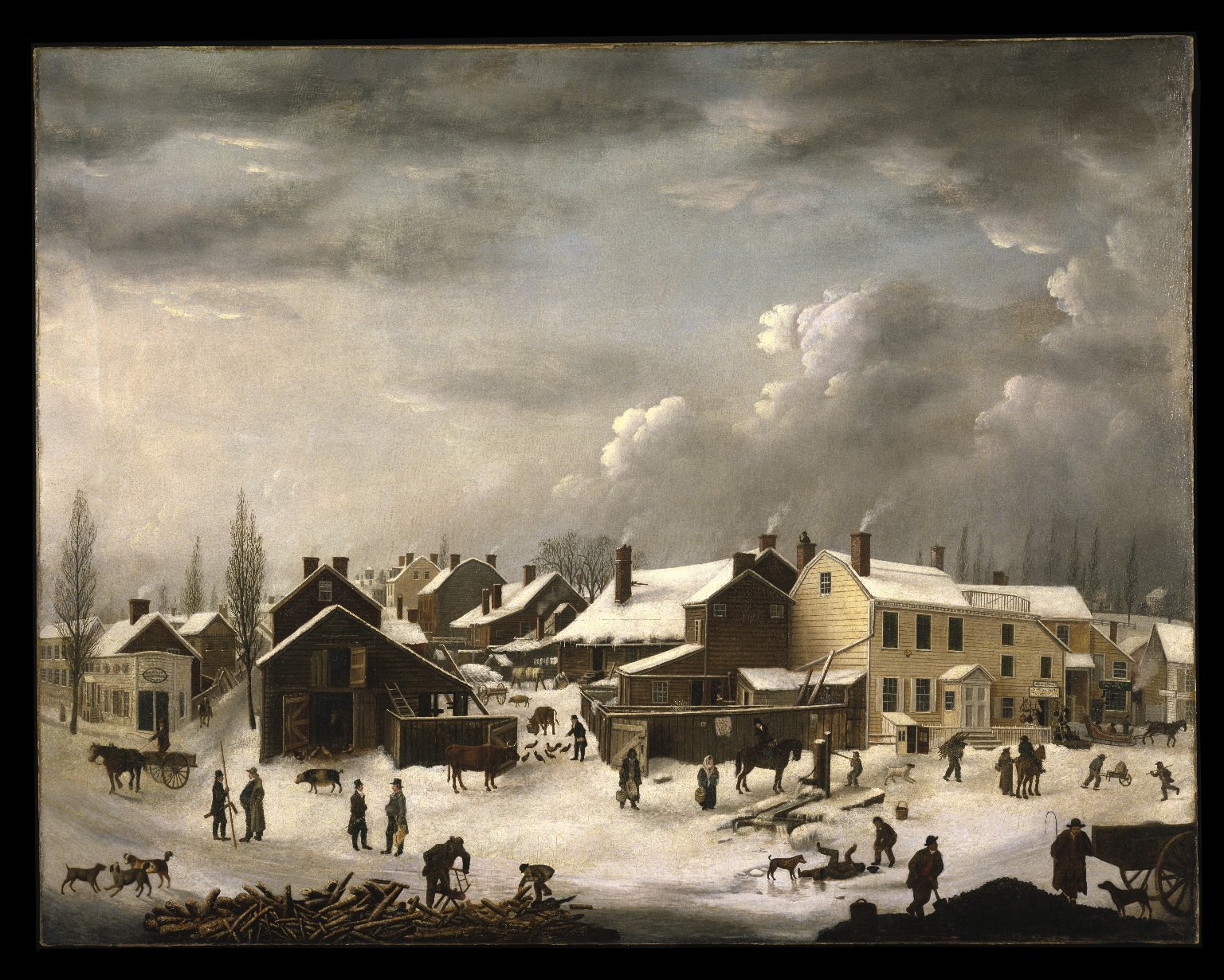The Urban Pastoral
After recently enjoying the David Bowie Is exhibit at the Brooklyn Museum, I wandered through the building’s American wing. Whenever I visit this particular museum, I seek out my favorite work in its collection, Winter Scene in Brooklyn by Francis Guy.

Winter Scene in Brooklyn, Francis Guy, c. 1819-1820 (Courtesy of Brooklyn Museum of Art)
Guy is far from a household name, and there might not be anything groundbreaking or remarkable about this painting. Then, why does it enthrall my imagination?
I love paintings capturing the New York metropolitan region and other American cities during their early settlement and development. These paintings depict a place and a life prior to density, industrialization, and modernity. A city intertwined with the natural world. A city promising a rich, yet slow manner of living. An urban pastoral, if you will.
The urban pastoral shapes contemporary American urban life. Backyard farms, heritage industries, and vintage barbershops are just a few of its more visible manifestations. The practitioners and proprietors of such operations are attempting to rethink what constitutes a city and its culture.
A city can be more than noise, grime, and money. The urban pastoral hints at a city of character, purpose, and community.
This is what one might see in Winter Scene in Brooklyn.